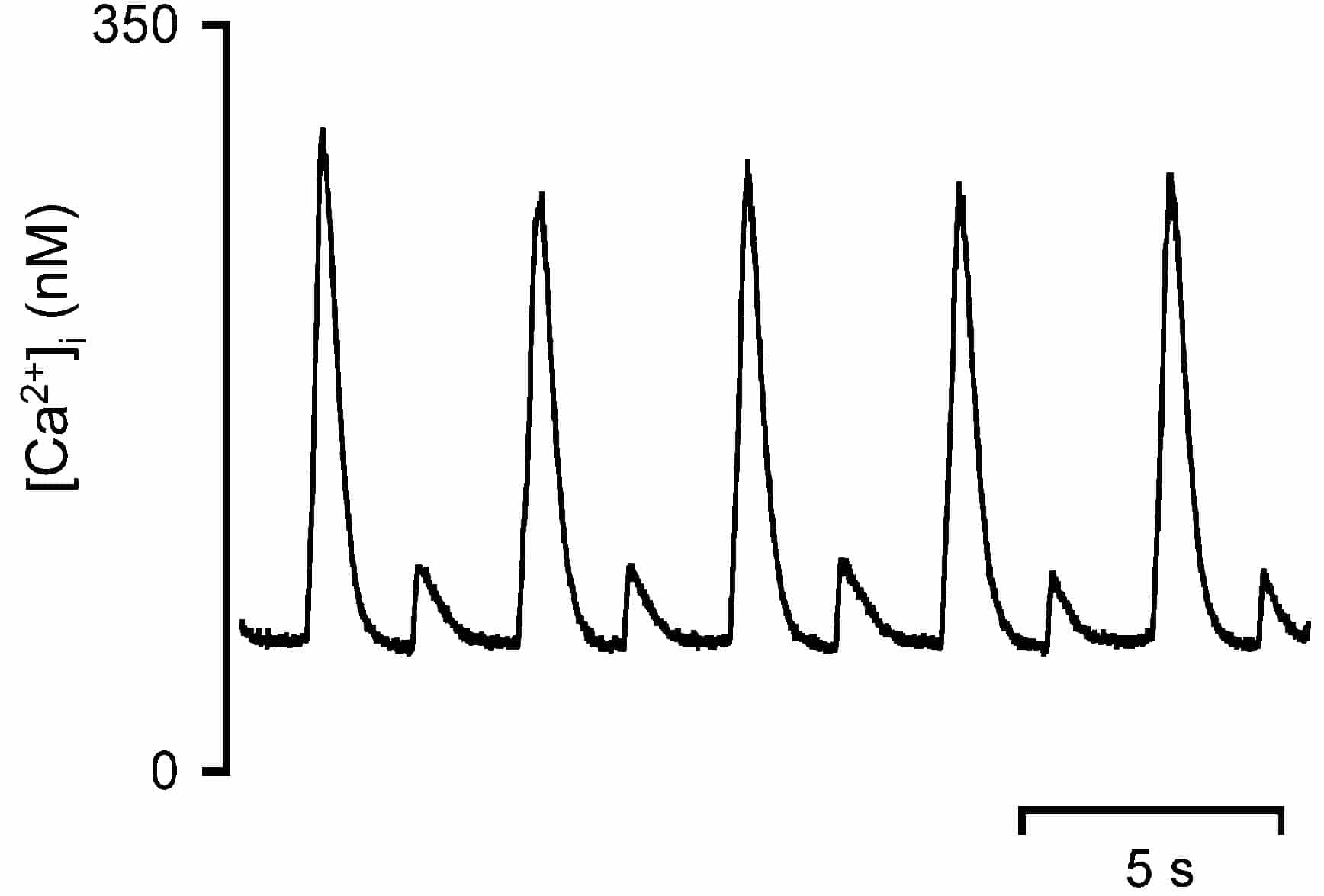We have recently shown that decreasing the ryanodine receptor (RyR) open probability (Po) with tetracaine results in alternation of the amplitude of the systolic Ca2+ transient (D’az et al 2002). Since RyR opening is triggered by Ca2+ entry through the L-type Ca2+ channels, this work investigates whether such non-uniform Ca2+ release can also result from a reduced L-type Ca2+ current (ICa) trigger. We also wish to know whether changes in sarcoplasmic reticulum (SR) Ca2+ content are involved in the development of alternans of systolic release of Ca2+.
Ventricular myocytes were obtained from rats that were humanely killed. The experiments were performed on fluo-4-loaded voltage-clamped single rat ventricular myocytes. Cytosolic Ca2+ was monitored using line scan confocal microscopy.
A reduced ICa trigger, (i.e. depolarisation for 100 ms from -40 to -20 mV) caused non-uniform release of Ca2+ and alternation of global Ca2+ transient amplitude, as we have previously reported with the RyR inhibitor tetracaine. A typical example of the large variations of Ca2+ transient amplitude is shown in Fig. 1. Application of caffeine (10 mM) to empty SR Ca2+ abolished alternans, which resumed as the SR Ca2+ load recovered (not shown). Quantification of SR Ca2+ load following a big release shows that content is 86.4 ± 9.8 µmol l-1 and rises to 112.4 ± 6.7 µmol l-1 after a small release (means ± S.E.M., n = 5, P < 0.02, Student’s paired t test). This suggests that the reason for alternation of systolic release is alternation of SR Ca2+ content. The large releases we measure are larger, in fact, due to propagation of ‘mini-waves’ (D’az et al. 2002). As the propagation of waves of Ca2+ release requires a threshold amount of Ca2+ in the SR these relatively small changes in SR content may be responsible for the non-propagation leading to small releases. A small depolarization can allow alternans to take place by activating only a relatively few release sites as L-type current is much reduced. This leaves a sufficient number of release sites available to take part in any subsequent propagating wave.
This work was funded by grants from the British Heart Foundation.

